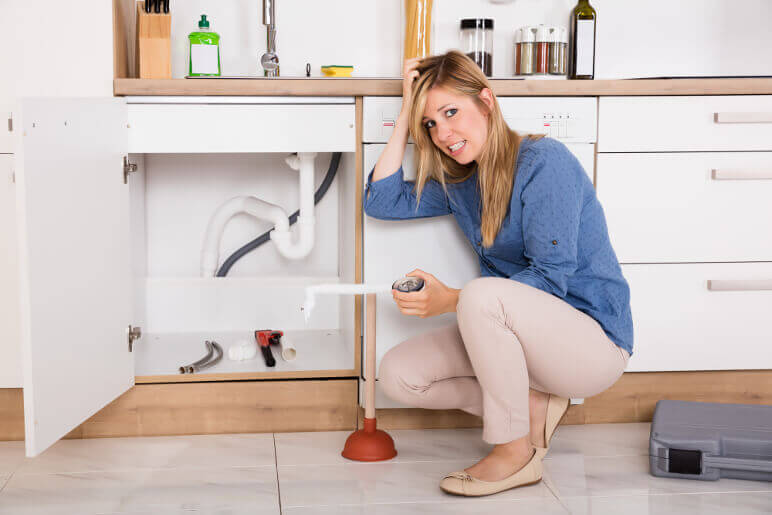
The Wrong Kind of Pipe Dreams: 4 Common Plumbing Problems to Watch For
Originally posted on https://plumbersintulsaok.net/the-wrong-kind-of-pipe-dreams-4-common-plumbing-problems-to-watch-for/
Pipes, toilets, and leaks – oh my! Most of us have an issue with our plumbing at some point as homeowners. If you’re lucky, it’s something a little drain snake can fix.
If you’re not so lucky, it can be worse – like pipe settling or cracking. Learn what is and isn’t normal in the plumbing problems guide below.
1. Dripping Faucets
When you have a dripping faucet, it doesn’t seem like a big deal. But it’s actually costing you a lot of money and the earth a lot of resources. The speed of the drip determines how much money and water you waste.
If just one of the faucets in your home dripped twice a minute, you’d waste 69 gallons of water a year. A faster drip, at five a minute, is up to 179 gallons a year, or one liter a day. That’s an expensive annoying sound!
It’s not hard to fix a leaky faucet. Most of the time the issue is an internal washer, inside the plumbing system or the faucet itself. You can fix it yourself, but it involves getting in under the sink and having the correct tools.
Since most of us don’t have those on hand, it’s cheaper to call a plumber who can fix the issue in a matter of minutes. It’s especially important to call a plumber if the dripping is in multiple faucets, since that may denote a bigger problem.
2. Slow Draining Tub
A lot of the time, if your showers turn into weird foot baths, it just means you have some junk in your pipes. It’s a pretty easy fix, even though it’s gross to look at/do.
You’ll need a drain snake- a long length of plastic with hooks on it, that wrap themselves around hair and debris. For your own sake, wear gloves before you do this process.
Be careful with the snake, too, as the hook spines can get pretty sharp. To use it, stick the snake down the drain until you can only see the handle and a few inches. Make sure you have a good hold on it.
Then, jiggle the snake around and twist it so that it can grab onto whatever is in your pipe. Once you’ve done that, start to firmly but slowly pull the snake out. It may tug back, or even seem to be stuck. Keep jiggling and pulling upwards if that happens.
What you don’t want to do is pull too fast or too hard, only for it to come out too fast and get gunk everywhere.
Flip the snake upside down over a trash can and get a few paper towels, folded together in your hand. Wipe down the snake, in the opposite way from the hooks. It’s the same way you’d clean a cheese grater.
Try putting the snake in and out one more time, for good measure. Now run some hot water and see if your drain problem is solved.
When a Snake Doesn’t Work
If that doesn’t get the job done, or you know it’s not a problem with hair buildup because you have some sort of net or drain catch, you’ll need to call a plumber. If you wait too long, a slow draining drain can become completely blocked.
Don’t use commercial drain cleaners. They’re bad for your pipes and they’re dangerous to use, let alone keep in the house. If you did use a commercial drain cleaner, it didn’t work, and you call a plumber – let them know what you used.
3. A Running Toilet
If the sound of dripping water doesn’t bother you, what about a constantly running toilet? It’s like white noise that you can’t get rid of, and is one of the more common plumbing problems.
And not only is it annoying, but it’s also expensive! In terms of water waste and cost. A toilet that’s running 24/7 can waste up to 200 gallons of water a day.
Usually, it’s a quick fix if you want to get a kit from the hardware store. But in terms of time, kit cost, and effort – you might as well hire a plumber.
Then there’s the issue of “silent leaks“. If your water bill seems higher than normal and you can’t figure out why this is probably the culprit. To see if you have one, put some food coloring in the tank of the toilet.
If the water inside the bowl shows the color (without flushing) then you have a silent leak and (yes) should call a plumber.
4. Low-Pressure Shower Head
Most of the time low pressure in your shower is an easy fix. The solution has to do with cleaning your faucet head.
In your water, there are vitamins and minerals. Even calcium. All these things can cause the tiny holes in your faucet to clog up. All you need to do (ideally) is scrub your faucet head with a toothbrush or other scrub brush. Use vinegar, since it’ll breakdown any lasting deposits.
If you’re seeing caked-in deposits that are inside the shower head, take a safety pin or toothpick and poke up through the hole.
If none of that works, or if the low-water pressure is spread throughout your house, it could mean there’s a bigger issue. Call a plumber to keep damage at bay.
Plumbing Problems, Solved
Most of the time, plumbing problems are just little things you can fix. Or little things a plumber can fix, within a few minutes. But if you have an older home with older pipes, more things can go wrong.
Don’t try to DIY anything outside of what you know how to do – and call us.
